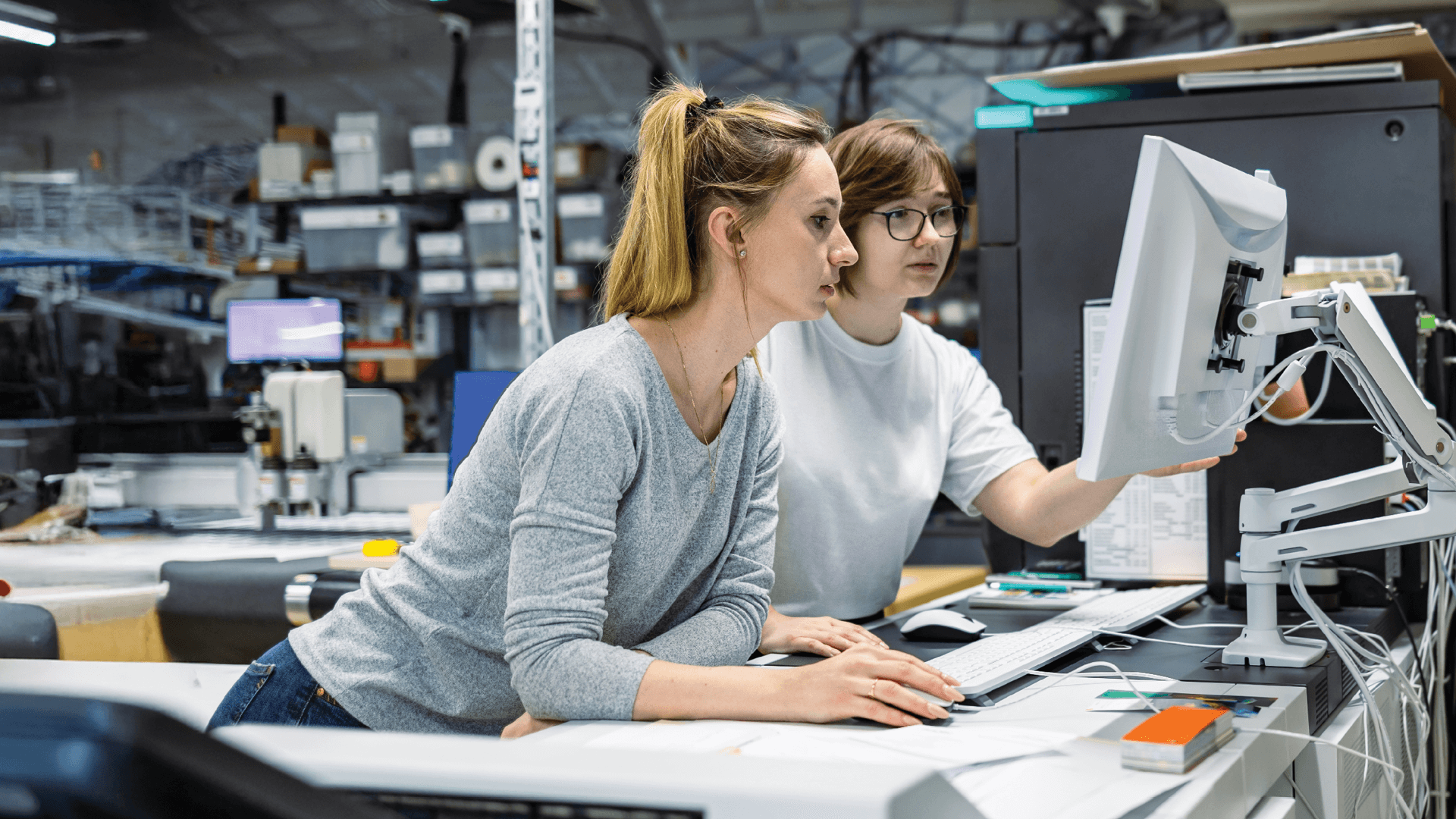How Commercial Printers Are Using AI

You can’t watch the news or go online without hearing about how artificial intelligence (AI) is doing something either amazingly impressive or, conversely, something concerning in terms of the disruptive power that AI represents. But like many modern advancements, the key to success with AI is knowing how to effectively use it to your advantage, something many commercial printers are finding out for themselves.
With the ability to enhance everything from rectifying design variations to helping accelerate QC processes, AI can help commercial printers — and graphic artists and designers by extension — increase production efficiency in service of saving time and money.
Here, we’ll look at a couple of ways commercial printers are already using AI to streamline workflows, reduce errors, and increase productivity in digital inkjet print.
Enhancing file design and layout
It can be difficult to translate a customer's description of what they want into a realized image, but with text-to-image generation, AI can take a simple text prompt and bring that vision to life. AI-powered design tools can also do the heavy lifting when it comes to standardized tasks like designing printing templates, arranging text, creating simple graphics, and sharpening images, which frees up time and creative energy for the designers themselves.
Color accuracy is mandatory in commercial printing, and AI can now provide customers with the exact color they want, while also monitoring production in real time to detect inaccuracies and make adjustments to ensure that color — and every other design element — is consistent throughout every printed piece of the project.
Personalization and variable data printing
According to a recent report, more than 92% of businesses are leveraging AI-driven personalization to drive growth, and for good reason. Personalization can reduce the cost of customer acquisition and retention by 28%, and companies that effectively use personalized marketing stand to generate more revenue than companies that don’t use personalized messaging.
The most efficient way to achieve this is through variable data printing (VDP) — printing bulk print orders with slight variations of personalized elements on each piece, whether that’s a name, an image, or even a personalized QR code.
AI makes this often lengthy process easier than ever. Algorithms can analyze those large amounts of customer data and personalize messages based on any number of variables and then transform that information into highly personalized marketing materials, saving you time and helping achieve higher ROI on your campaign.
Seamless digital integrations
Print doesn’t stop at the mailbox. In fact, it’s an effective way to bridge the physical and digital worlds, and AI is a way to close that gap even further. By including digital integrations on to print marketing pieces, the recipient can scan a code with their phone and be taken to your desired digital touchpoint — anything from your website and social channels to customized landing pages, videos, or an online store.
The most effective way to do this is through scannable QR codes added directly to a printed piece, which when scanned, instantly engages the user. AI is now transforming this experience in new and innovative ways through augmented reality (AR) and near-field communication (NFC). AR-enabled devices interpret the data from the “trigger” elements and codes included on print to take users to a completely immersive experience where they can do things like virtually try on products, demo items, or watch interactive brand demonstrations in real time. NFC works in a similar way, as once the tag is scanned by the user, AI is able to use that data and provide targeted perks — everything from exclusive coupons to product suggestions.
Automating workflows
AI is also being used to streamline and simplify the printing process at every stage, from performing repetitive tasks and doing proofing to machine maintenance. AI tools can also analyze design trends, use analytics to predict the materials that will be needed in the near future, and even use machine learning to help printers proactively schedule machine maintenance before equipment failures occur.
This also increases efficiency, as when AI and automation take care of the more menial tasks, creative staff can focus on new ideas, upskilling, and shifting focus to how AI can help grow their business.
AI has no longer become a futuristic concept that businesses can ignore, and printers should view it as a way to enhance the creativity and skills they already have—not a threat that’s out to replace them. By learning how to use it to their advantage, commercial printers can stay ahead of the game and continue to prove that print is here to stay — and it’s better than ever.
That success starts with understanding great inkjet design. The Designer’s Guide to Inkjet, 3rd Edition has everything you need to know to harness the print quality, speed, and efficiency of digital inkjet. Download the guide to learn more.
See More Like This
See MoreInkjet Insights
LEARN: Inkjet Treated vs. Inkjet Coated: What to Know About These Paper Types
Inkjet Insights
LEARN: What Is a Magalog?
Inkjet Insights
LEARN: What Are Bitmap Images? A Designer’s Guide to Image File Formats
Inkjet Insights
LEARN: How to Create a Press-Ready PDF for Digital Inkjet Printing